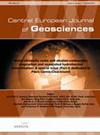Cylindrical probe with a variable heat flow rate: A new method for the determination of formation thermal conductivity
引用次数: 2
Abstract
The thermal conductivity of a geological formation is one of the important petrophysical parameters which are preferable to study in situ in geophysical well logs. A new technique for the determination of formation thermal conductivity has been developed. We assumed that formation dry density, porosity, and pore fluids saturations could be determined from core samples or cuttings. In this case the specific heat and density of a formation can be quantitatively estimated. It is also assumed that the instantaneous heat flow rate and time data are available for a cylindrical probe with a variable heat flow rate placed in a wellbore. A semi-theoretical equation describing the temperature of the probe’s wall is used to determine in situ the formation conductivity as a function of the temperature increase. The formation thermal diffusivity is also calculated. A field example is presented.变热流率圆柱探头:一种测定地层导热系数的新方法
地质地层的热导率是地球物理测井中较适于现场研究的重要岩石物性参数之一。本文提出了一种测定地层导热系数的新方法。我们假设地层干密度、孔隙度和孔隙流体饱和度可以从岩心样品或岩屑中确定。在这种情况下,可以定量地估计地层的比热和密度。同时假设在井筒中放置一个具有可变热流率的圆柱形探头,其瞬时热流率和时间数据是可用的。描述探针壁温度的半理论方程用于确定地层电导率作为温度升高的函数。计算了地层热扩散系数。给出了一个现场实例。
本文章由计算机程序翻译,如有差异,请以英文原文为准。
求助全文
约1分钟内获得全文
求助全文
来源期刊

Central European Journal of Geosciences
GEOSCIENCES, MULTIDISCIPLINARY-
自引率
0.00%
发文量
0
审稿时长
>12 weeks
 求助内容:
求助内容: 应助结果提醒方式:
应助结果提醒方式:


